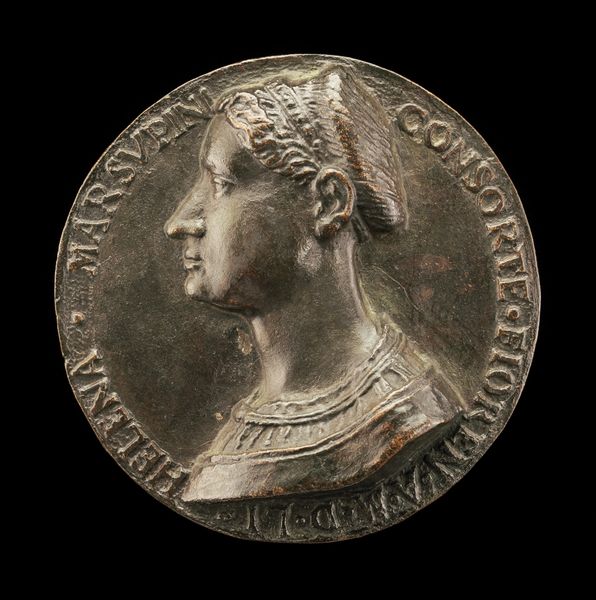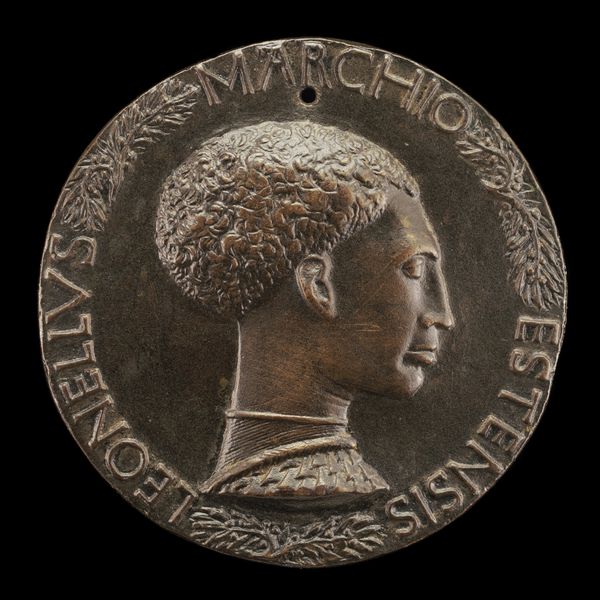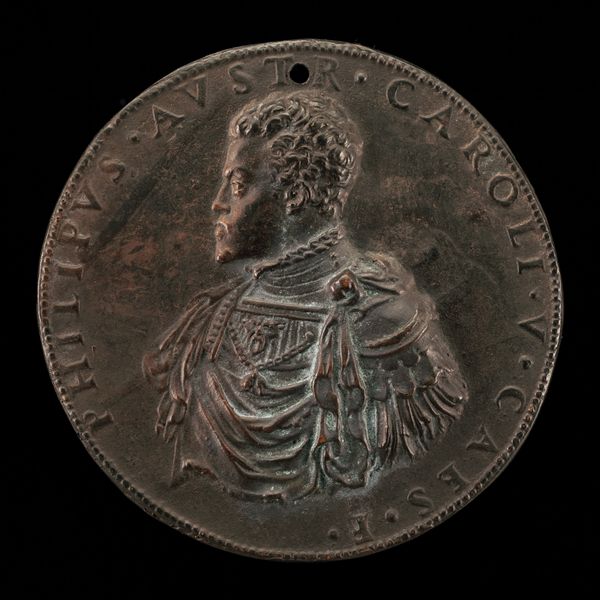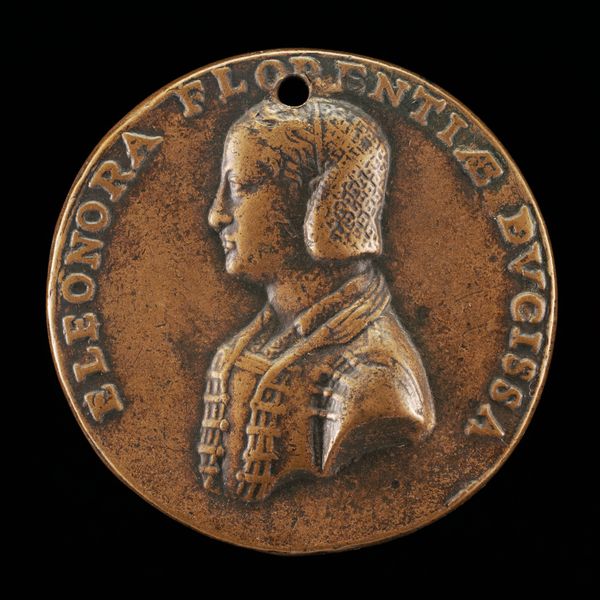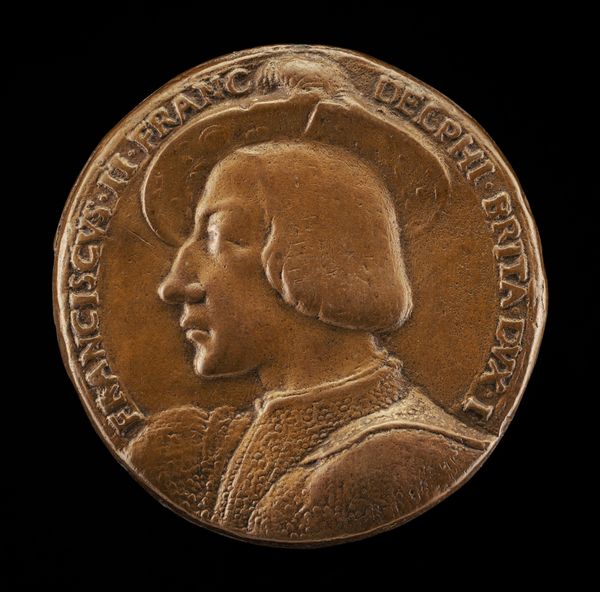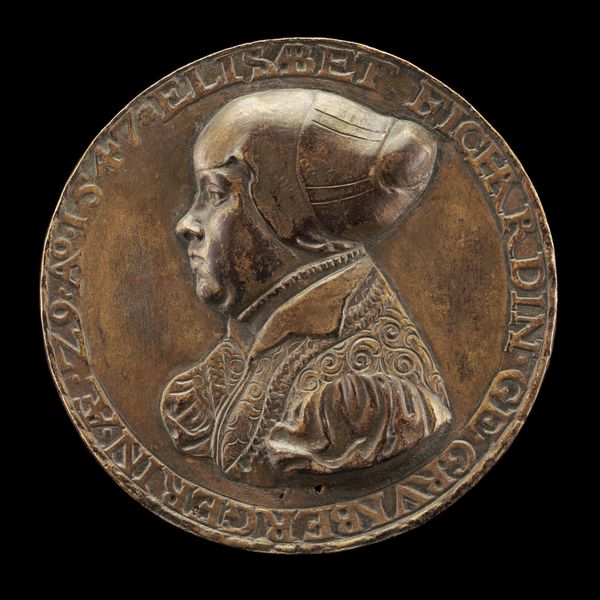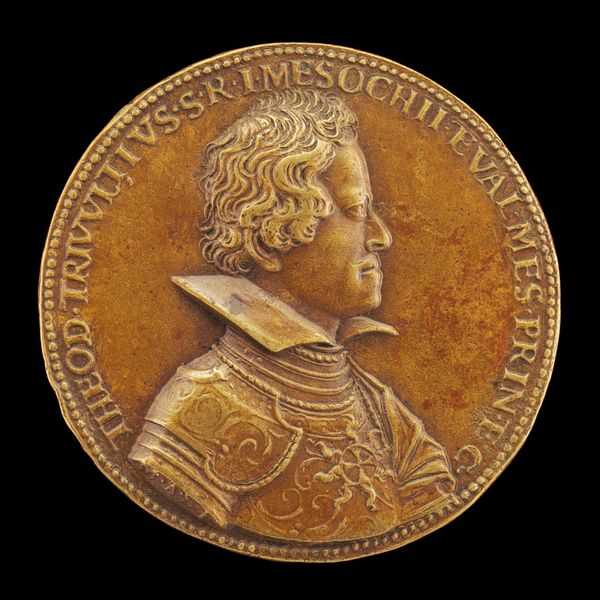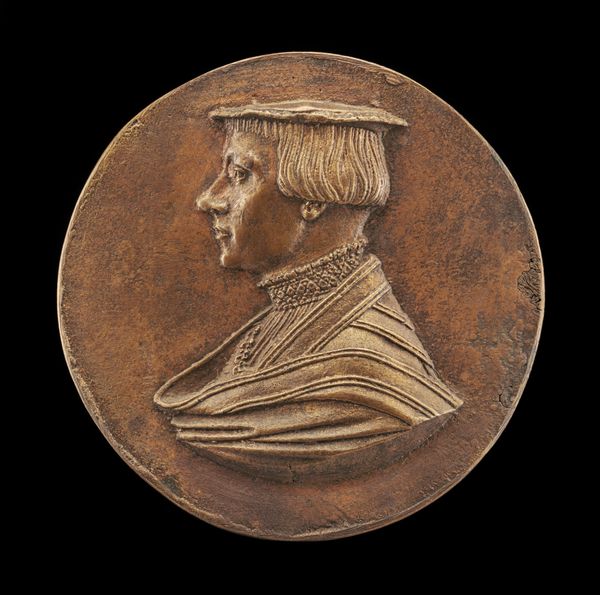![Giovanni de' Medici delle Bande Nere, 1498-1526, Celebrated Condottiere and Father of Cosimo I [obverse] by Francesco da Sangallo](/_next/image?url=https%3A%2F%2Fd2w8kbdekdi1gv.cloudfront.net%2FeyJidWNrZXQiOiAiYXJ0ZXJhLWltYWdlcy1idWNrZXQiLCAia2V5IjogImFydHdvcmtzLzlkMWZjZGFmLTQ3YTctNDM2OC05OWFmLTgzNGU2ODJhNDY1ZC85ZDFmY2RhZi00N2E3LTQzNjgtOTlhZi04MzRlNjgyYTQ2NWRfZnVsbC5qcGciLCAiZWRpdHMiOiB7InJlc2l6ZSI6IHsid2lkdGgiOiAxOTIwLCAiaGVpZ2h0IjogMTkyMCwgImZpdCI6ICJpbnNpZGUifX19&w=3840&q=75)
Giovanni de' Medici delle Bande Nere, 1498-1526, Celebrated Condottiere and Father of Cosimo I [obverse] c. 1522
0:00
0:00
bronze, sculpture
#
portrait
#
medal
#
sculpture
#
bronze
#
sculpture
#
italian-renaissance
#
statue
Dimensions: overall (diameter): 9.29 cm (3 11/16 in.) gross weight: 268.98 gr (0.593 lb.) axis: 9:00
Copyright: National Gallery of Art: CC0 1.0
Editor: Here we have a bronze medal from around 1522, created by Francesco da Sangallo. The medal depicts Giovanni de' Medici, and it's incredible how much detail is packed into such a small space. The inscription encircling the profile makes me think of its historical function, as something akin to a political symbol or memento. What can you tell me about the role of art in shaping perceptions of power at this time? Curator: Absolutely. This medal offers insight into how power was curated and disseminated during the Renaissance. Medals, particularly those depicting military leaders like Giovanni de' Medici, functioned as propaganda tools. Who do you think they were intended for? Editor: Wealthy citizens, nobles, people close to the family of Medici? Curator: Exactly. Think about how these circulated. These medals weren't just art objects; they were actively distributed, sometimes thrown into crowds, strategically given as gifts to solidify alliances or impress foreign dignitaries. In essence, it was carefully manufactured memorabilia of a prominent leader, aimed at enhancing the Medici’s influence, no? Editor: So, the distribution strategy was as important as the artistry itself? Curator: Precisely! Consider the artistic choices here. The portrait presents Giovanni in profile, like an ancient Roman emperor, instantly connecting him to the grandeur of antiquity, what visual message did that give? Editor: Authority and timelessness? The family sought validation through history? Curator: Indeed. Now, think about how museums today continue this legacy. How we display objects, the narratives we create, are continuations of these power dynamics, of shaping a legacy. How should museum exhibit these objects? Editor: It's almost sobering to see the roots of modern PR so clearly represented. I guess paying attention to that initial intention and political context really brings a lot of understanding to the piece! Thanks, that definitely changed my perspective!
Comments
No comments
Be the first to comment and join the conversation on the ultimate creative platform.
